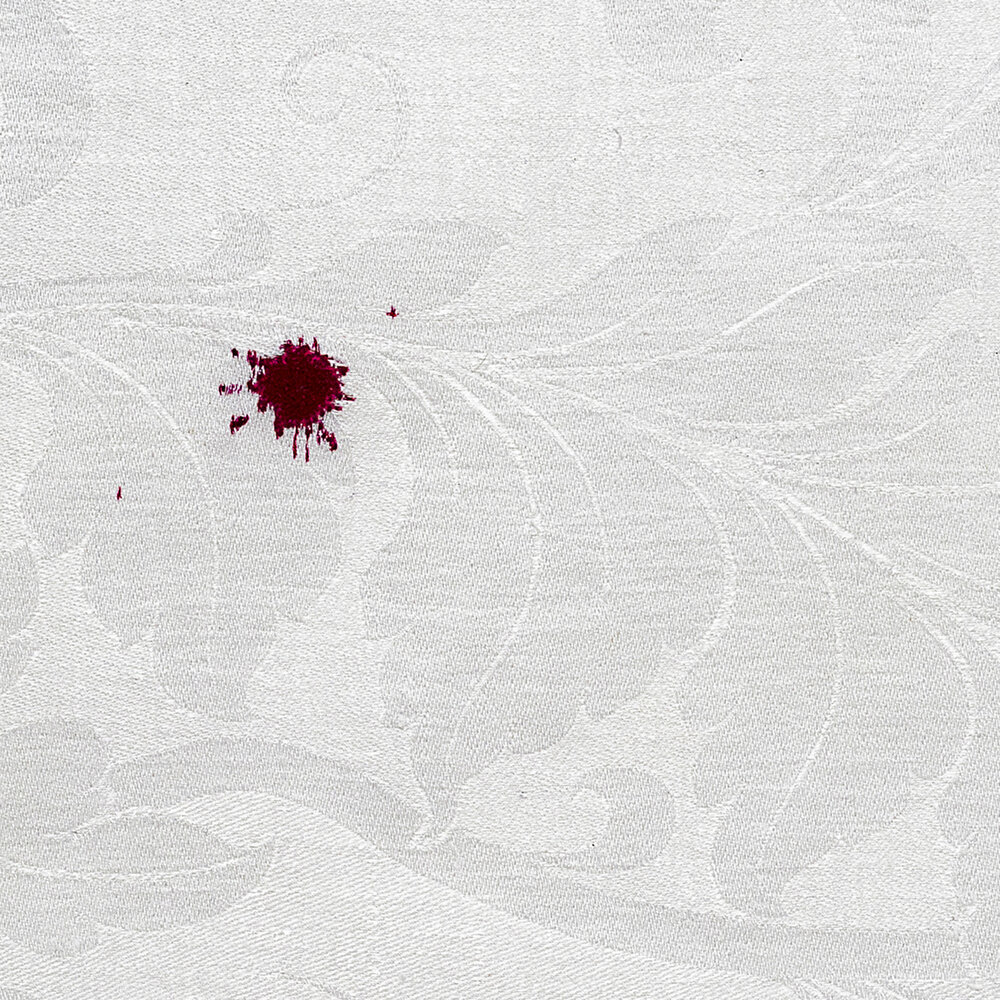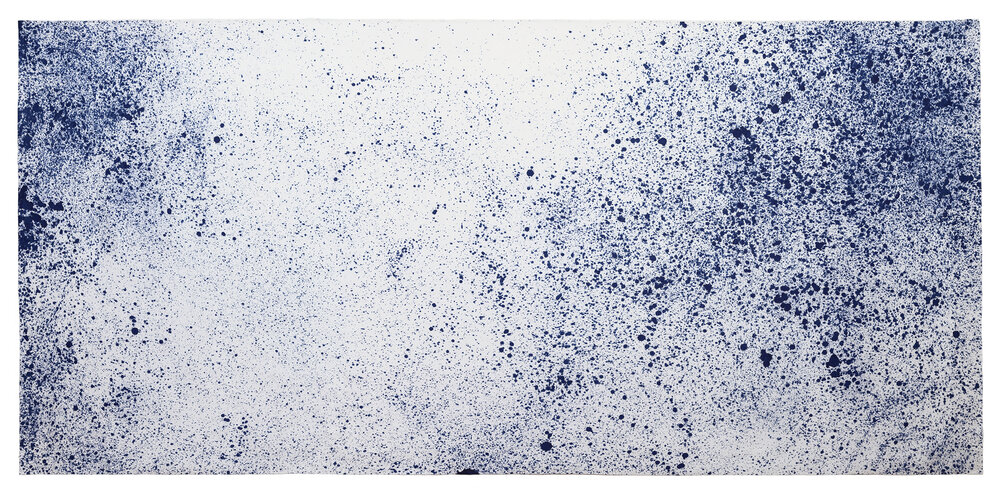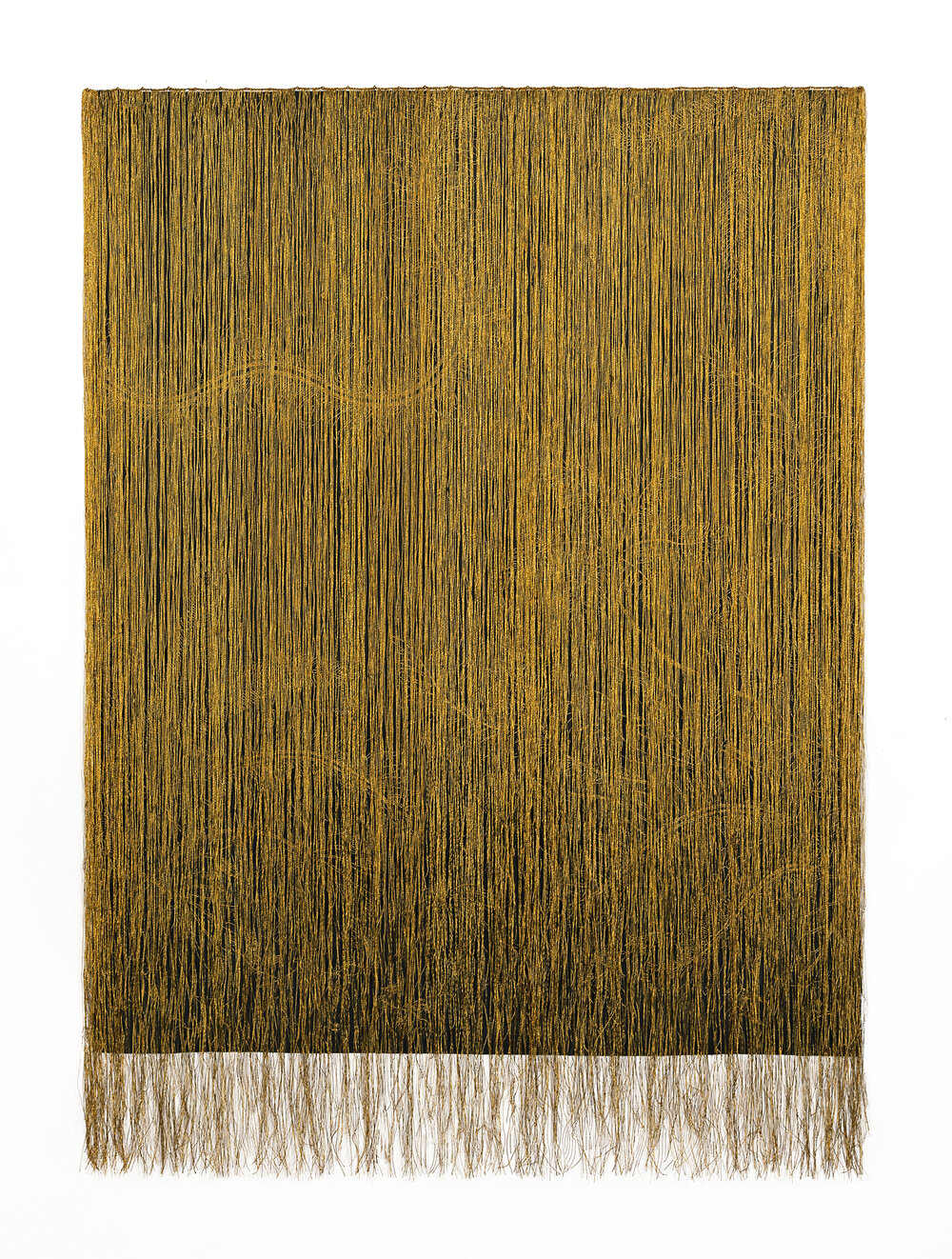Anne Wilson interview 2020

5. Anne Wilson. Evanston, IL.
For more information, please see: www.annewilsonartist.com
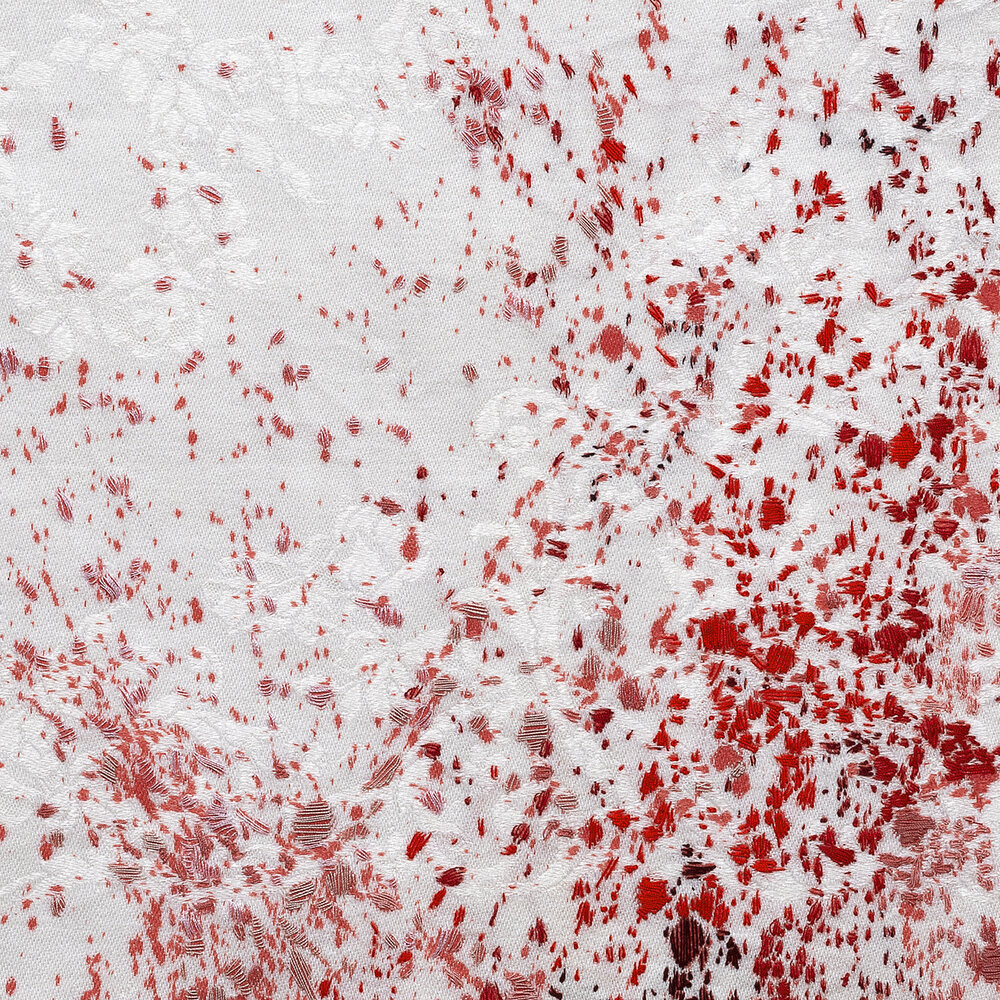
Anne Wilson, Material Drawing no. 4.28 (detail), 2018-2020. Damask cloth, ink, thread, 10 ¾ x 10 5/8 inches. Photo: Céleste Cebra.
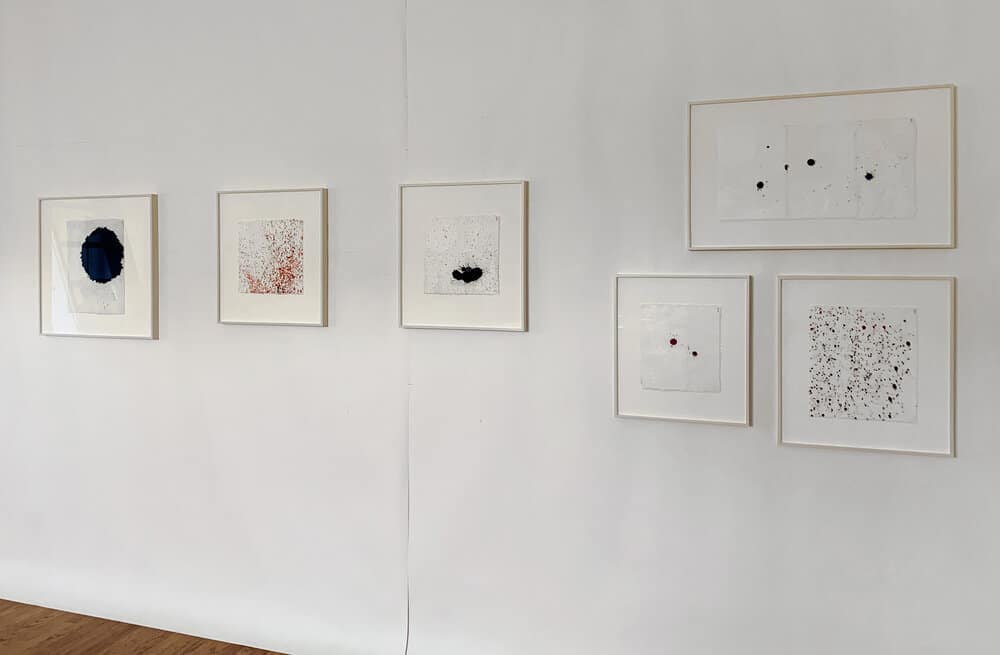
Anne Wilson, Studio installation of a selection of Material Drawings, 2020. Image courtesy of the artist.
First, and most importantly, how are you doing? How are you navigating the highs and lows? What are you reading? What research or writing are you doing that you find compelling?
In this current moment where it feels like the world has turned upside down, I have great fears and anxieties, like most others. I’ve needed to become more mindful of self-care – tai chi as a meditation, early morning walks, and reading more, savoring language and words. One delight is to read the new Judith Butler book, a subject close to my heart – “The Force of Non-Violence” (London: Verso, 2020).
I’m on sabbatical from teaching this year and have been working towards a solo exhibition at Rhona Hoffman Gallery that was to open May 15, and of course it has now been rescheduled, possibly to July. But I’m really fortunate that my studio is in the same building as my home so I’m able to self-isolate and keep working.
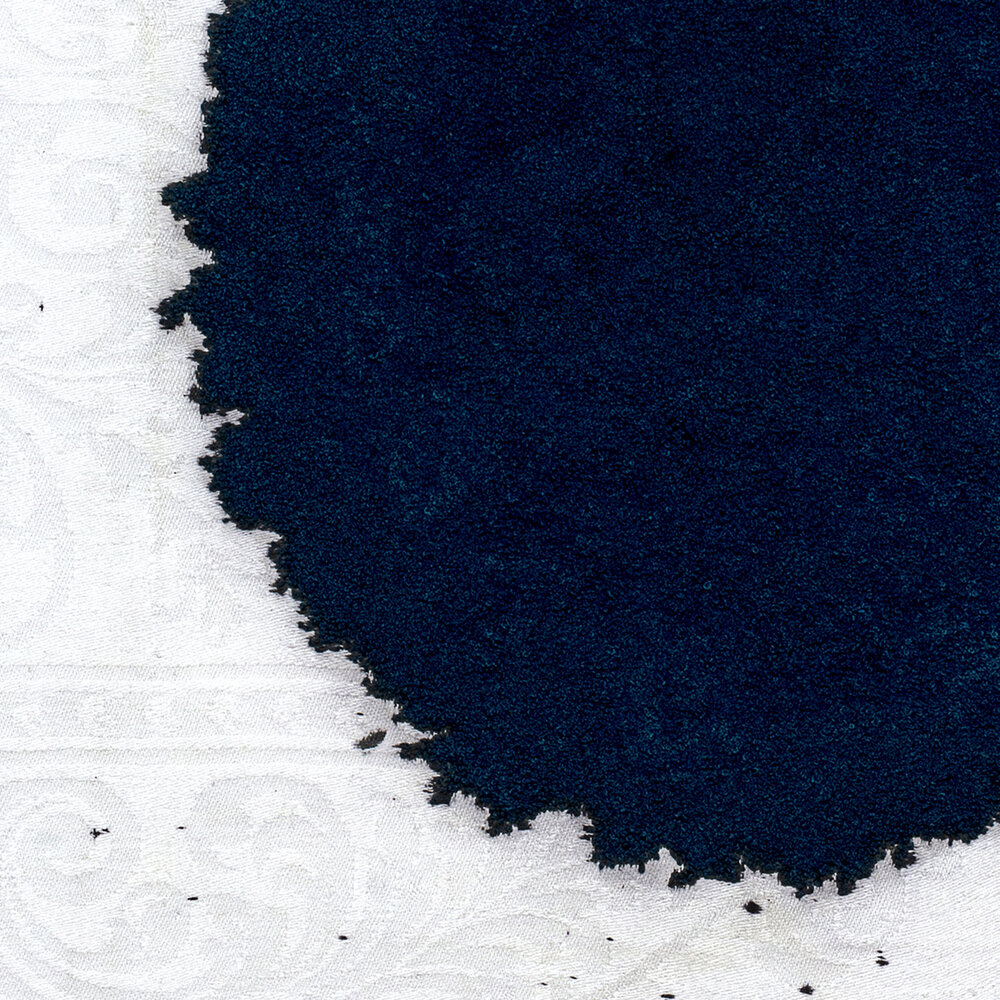
Anne Wilson, Material Drawing no. 10.12 (detail), 2018-2020. Damask cloth, ink, thread, 14 3/8 x 11 inches. Photo: Céleste Cebra.
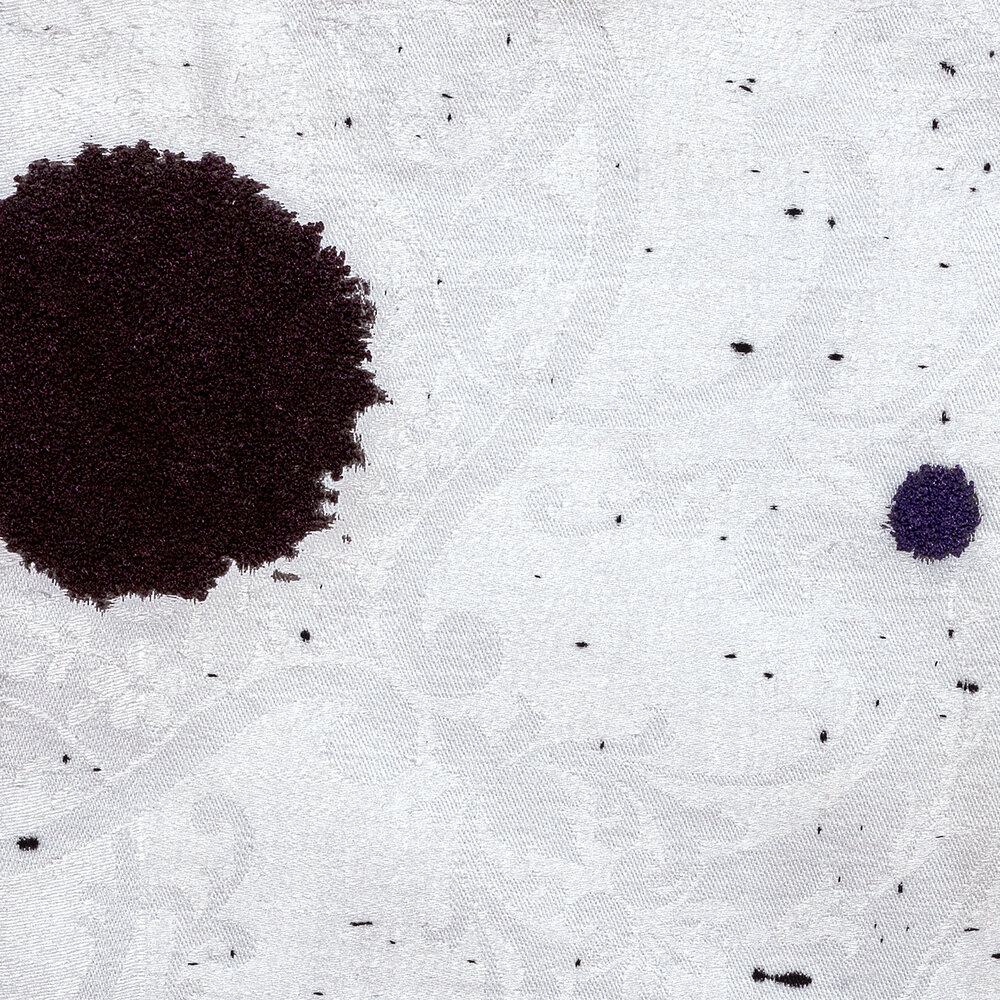
Anne Wilson, Material Drawing no. 4.28 (detail), 2018-2020. Damask cloth, ink, thread, 10 ¾ x 10 5/8 inches. Photo: Céleste Cebra.
It’s my experience that most artists engage with some level of self-isolation in their day to day art practice. Has this been your experience? And if so, have you found these innate rhythms to be helpful during this larger, world-wide experience of isolation?
I love working with studio assistants, and research assistants and I value our interactions, the sociability and discussions about art and culture. I had a tradition of late afternoon visitors most weekdays, for drinks and talks about art and life. I miss terribly all of these daily social interactions. As I work alone in the studio now, I’m listening more than ever to podcasts, and I’m learning a lot. In a recent Zoom talk by Carol Becker (writer, cultural critic, former SAIC Dean, now at Columbia NYC), Carol says: I don’t think we can go back to the systems as they existed pre-pandemic. She talks about how artists are intrepid if we can stay out of the dimension of fear. I think about this as I look forward, how to reduce anxiety and move forward with the belief in the power of art to connect, to offer solace, reflection, and meditation on the human condition.
Anne Wilson, Material Drawing no. 1.26 (detail), 2018-2020. Damask cloth, ink, thread, 12 x 17 ¾ inches. Photo: Céleste Cebra.
It would be great if you could briefly talk us through your practice. Understanding it is integral to appreciating the multivalence of your work.
I have 4 projects that make up my upcoming exhibition, If We Asked About the Sky. We’ll see photos here, but briefly the projects include 26 Material Drawings (like an archive, each stitch dated in the upper right corner), 4 larger wall works, ink and embroidery – Release, Immerse, Weep, and Remember, a floor installation Absorb/Reflect of black garlands and gold embroideries, and the largest work, titled the same as the exhibition, If We Asked About the Sky, is ink and hair embroidery on a huge white damask table cloth.
The work begins through the chance operation of throwing ink onto white damask cloth fragments. Through capillary action, the ink absorbs into the fibers of the cloth, expanding out to form irregular edges around spherical shapes. This quick gesture is then developed with the deliberate, slow stitch of hand embroidery using silk thread and hair.
The image associations shift from everyday phenomena—a pin prick, a spill or splatter—to a celestial vocabulary—planets, craters, and galaxy clusters. Moving between the bodily or earthly, and visualizations of the universe, there is a paradoxical juxtaposition of ordinary and extraordinary, at once an expanding pedestrian stain in a table cloth and an image referencing cosmology and the expansion of the universe. The work proposes both smallness and vastness, and inhabits a space of contemplation between the mortal world and a celestial universe that is infinite and unknowable.
With the proliferation of media images of death, destruction, and injustice that constantly surround us, this work is a meditation on living in and through loss. How does one recognize and respect a life? What is the space between living and dying? Can a drop of blood be placed in a galaxy beyond the trauma of mortality?
Anne Wilson, If We Asked About the Sky, 2020. Damask tablecloth, ink, hair, thread, 54 x 106 inches. Photo: Jake Silby.
Has any of your imagery shifted in a reflection to what’s currently happening? Or are you considering using coronavirus related imagery for future projects? Do you find it necessary to make work about the pandemic? And why, or why not?
Well, I have been working on this new body of work for 3 years and yet the work can certainly feel as if made in response to our current situation, this pandemic. Perhaps because the themes of this work are large, about loss and the meaning of a life, and about the space between living and dying. The questions above and the words below were written much earlier this year –
Absorb/Reflect, 2020 (project statement) Mourning Garlands nos. 1, 2, 3… (ribbon, thread) Golden Roundels nos. 1, 2 (damask table napkin, ink, gold thread embroidery) Installation on floor platform, 132 x 64 inches
The embroidered gold roundels reflect up, a reference to the sun, a constant presence.
The black garlands are objects of meditation on a subject of loss – the loss of a person, a community, a home, a place, an event, or an ideal. The loss may be tragic, a devastating rupture, or signify another kind of life passage or transition. They offer a way to remember, transferring the care of a maker to another person.
I first started making these black garlands in the late 1980’s for friends mourning the loss of loved ones from the AIDs epidemic. Over time, I also made them for friends experiencing other kinds of losses. As art objects, these garlands may be displayed as formal wreaths, or positioned in a less formal way; they are intended to be relational in response to the needs or wishes of another. I hope they are useful. I welcome the personal interactions these objects might elicit.
A portion of the proceeds from these garlands will be donated to Doctors Without Borders.
— Anne Wilson, February 2020
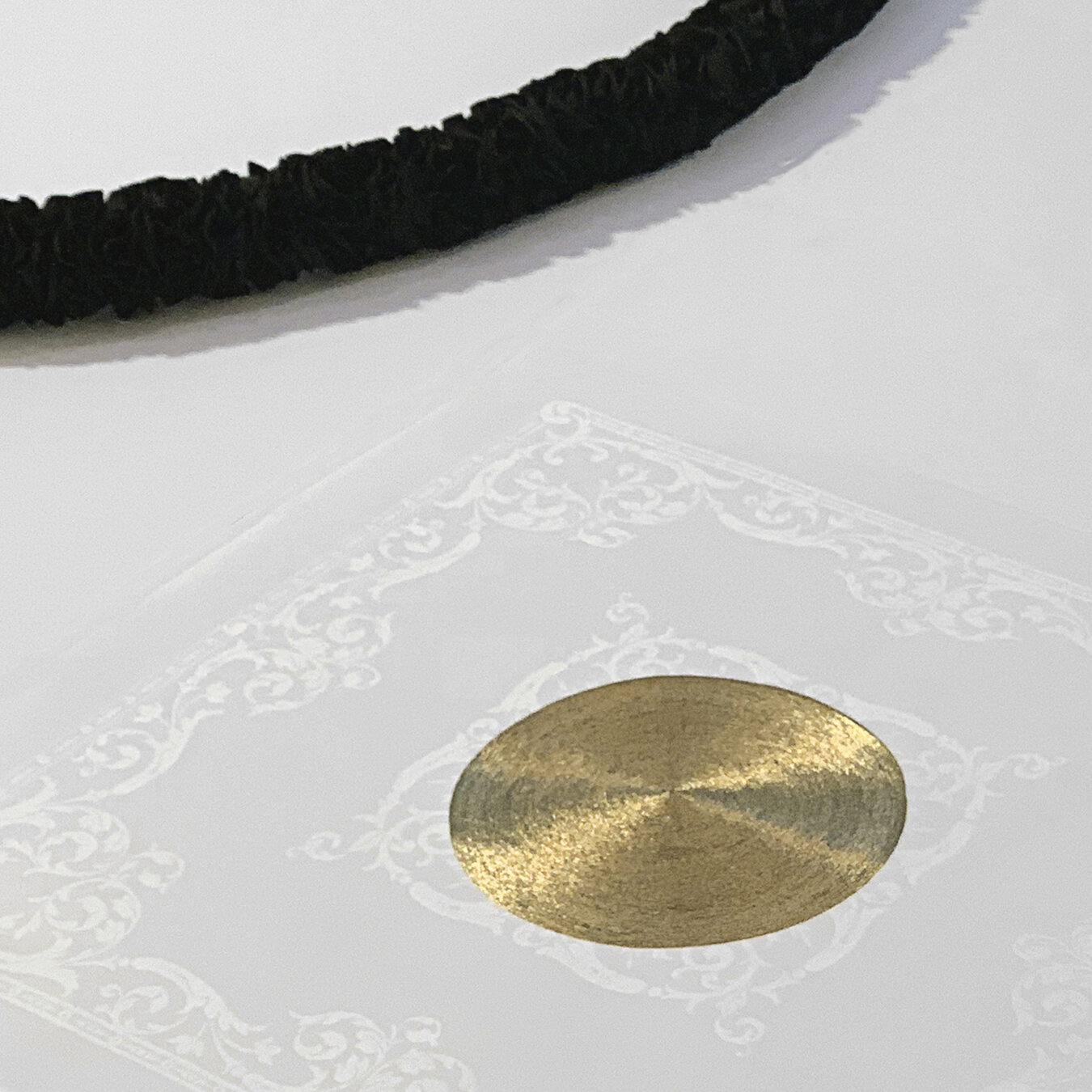
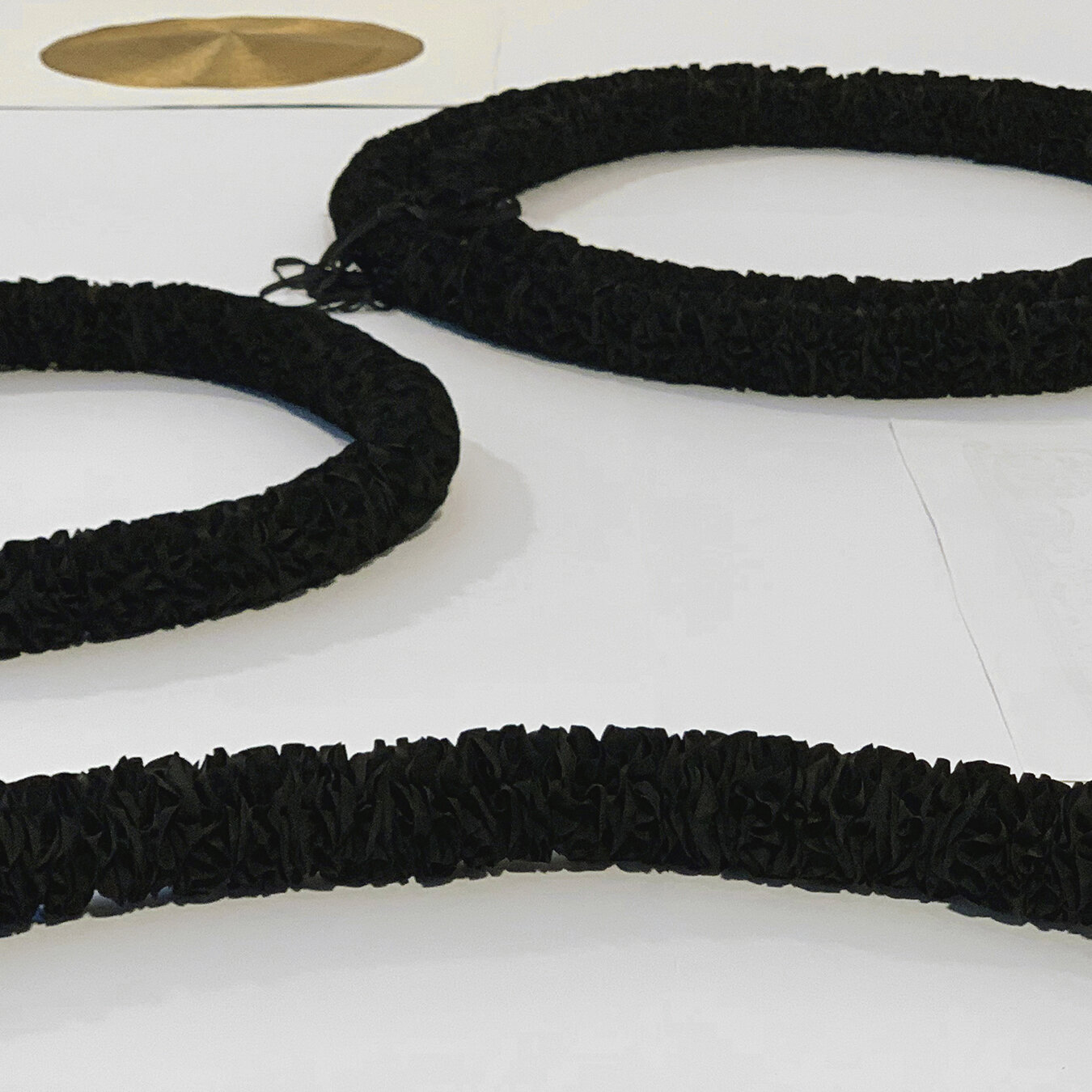
Anne Wilson, Absorb/Reflect, 2020 Mourning Garlands nos. 1, 2, 3… (ribbon, thread). Golden Roundels nos. 1, 2 (damask table napkin, ink, gold thread embroidery). Installation on floor platform, 132 x 64 inches. Photo: Anne Wilson Studio.
Are you thinking differently? Coping differently? Inspired differently? What do you think or hope will be different after this crisis has passed?
I think of ways forward – likely it will be filled with starts and stops: How will what we learn from living in the pandemic change our patterns and impulses for consumption? How will what we learn from living in the pandemic affect the environment in positive ways, with greater commitment and knowledge? How will what we learn from living in the pandemic affect human rights issues, and affect changes in glaring disparities and inequalities between people? Also, as we move out into the world from this great period of social isolation, how do we slowly create physical community without close contact? Museums and galleries are charged with thinking this through in possibly multiple stages and steps.
Certainly, questions arise more profoundly than ever about the meaning of art and the experience of art. For example, what does it mean to physically engage with a work of art? What is the importance of direct experience? As artists, we are problem solvers and can adapt to change, so there is much new online learning. But on a screen, you can’t see scale. There is a complete loss of other sensory experiences. In the future, I sincerely hope that the new virtual learning will always be in a complementary relationship to direct physical experiences.
Anne Wilson, Remember, 2020. Damask cloth, ink, gold thread embroidery. 42 x 31 inches. Photo: Jake SIlby.
What is bringing you solace, or even joy, in this moment?I love being with my husband Michael, and being able to work together in the same building. And connecting through WhatsApp and Zoom with family, Katie and William, and our larger extended families and good friends.
